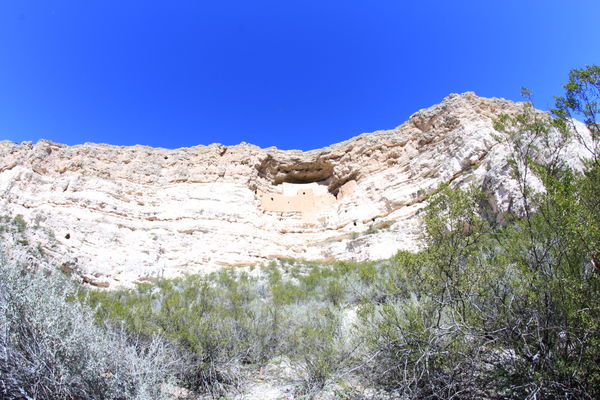What Happened?
Nov 24, 2018 09:55:20 #
BebuLamar wrote:
... What reason do we need the CPL? I knew but I now forgot.
CPL over LPL: the reason is that the camera's electronics (auto focus, auto exposure) works better with a CPL; I am not knowledgeable about why.
Nov 24, 2018 10:12:57 #
Nov 24, 2018 10:16:39 #
Wingpilot wrote:
Sony A6300 with 15-50mm lens, with CPL. Sun was off to my right, about 120 degree. Why do I have this dark blue area at the top of the image? I figured using the CPL would result in the sky being uniformly darkened. I have to be missing something here. I'd appreciate an wisdom here.
Edit: I forgot to add that these are all unedited RAW files, right out of the camera.
Edit: I forgot to add that these are all unedited RAW files, right out of the camera.
The sky is naturally polarized.
At different angles, if you pay attention, you can see it without any filter, just with your eyes.
A polarizer will exaggerate this effect thus getting what you have here.
With a WA lens this effect is exaggerated as the lens is capturing a large portion of the sky with differing amounts of polarization.
Just something to be aware of.
First picture is SOC with a polarizer.
Second picture is SOC without a polarizer. Look at the uneven sky. This is the example of naturally occuring sky polarization. A polarizer would have exaggerated this.
Hope this helps.
With CPL

Without CPL

Nov 24, 2018 10:31:10 #
larryepage
Loc: North Texas area
PeterBergh wrote:
CPL over LPL: the reason is that the camera's electronics (auto focus, auto exposure) works better with a CPL; I am not knowledgeable about why.
The need for circular polarizers arose with TTL metering. When light reflects off a surface at an angle, it gets partially linearly polarized...the lower the angle, the greater the polarization. Anyway, when light is reflected off of an SLR's mirror, some of it gets polarized. With a linear polarizer, the metering system can get confused if some parts of the image end up being cross polarized and therefore darker to the meter than they will be on the sensor or film.
Circularly polarized light interacts much less with linear polarization and does not cause this error.
If you don't do TTL metering, you should be able to use linear polarizers just fine.
This theoretically should not be a problem at all with mirrorless bodies, and could be an objective argument in their favor. I'd be very interested in seeing the results if someone would be willing to do some experimentation on this.
Nov 24, 2018 10:34:11 #
The sky is blue due to scattering of sunlight by components of the atmosphere, primarily molecules, but some dust particles.
There are two kinds of scattering of light: Rayleigh scattering, which is caused by particles smaller than the wavelength of light (e.g. atoms and molecules) and Mie scattering, which is caused by particles with dimensions of the wavelength of light or larger (e.g. dust particles). Rayleigh scattering is proportional to the fourth power of the wavelength, which is the reason for the blue color. To some extent, sunsets appear red because more blue light is scattered out of the path of the rays from the sun as it travels through more atmosphere than it does in mid-day.
Rayleigh scattering produces polarized light, but the degree of polarization depends on the angle between the light from the sun and the scattered light. The polarization is largest when the scattered light is 90 degrees from the rays directly from the sun. The plane of polarization will be perpendicular to the line joining the sun and the area scattering the light.
There are two kinds of scattering of light: Rayleigh scattering, which is caused by particles smaller than the wavelength of light (e.g. atoms and molecules) and Mie scattering, which is caused by particles with dimensions of the wavelength of light or larger (e.g. dust particles). Rayleigh scattering is proportional to the fourth power of the wavelength, which is the reason for the blue color. To some extent, sunsets appear red because more blue light is scattered out of the path of the rays from the sun as it travels through more atmosphere than it does in mid-day.
Rayleigh scattering produces polarized light, but the degree of polarization depends on the angle between the light from the sun and the scattered light. The polarization is largest when the scattered light is 90 degrees from the rays directly from the sun. The plane of polarization will be perpendicular to the line joining the sun and the area scattering the light.
Nov 24, 2018 10:54:36 #
mrjcall wrote:
I notice you snuck an iPhone image in as the last image. No blue sky effects there, eh? 😎
Uh-oh! That was an "oops" on my part. On the other hand, it seemed to spark some good conversation regarding the natural polarization of the sky. But I didn't intentially include the iPhone shot. But it's not a bad one, either.
Nov 24, 2018 11:00:33 #
cdayton wrote:
I don’t know how to display an unedited RAW image but your pics on download are JPEGs
On my computer it says they're RAW, but I think they must get converted when posted online. I know I put a couple of the shots I took into Photoshop Express, but I didn't actually do any editing on them. In any case, those are all straight out of the camera. Well, one is straight out out of the iPhone.
Nov 24, 2018 11:05:36 #
I just got up and poured myself a cup of coffe and sat down to see what came in last night. After reading all these responses to my question, I feel like I've just had a good lesson in physics regarding light and polarization. About the only thing I really knew was that the degree of darkness of the blue sky depends on the angle at which one views the horizon, but I wasn't aware that there was actually a degree of natural polarization. I found all that interesting. I believe that I will remove my CPL, and if I want the sky to be darker blue, I'll do it in post. I want to thank you all for your interest and kind instruction. It was very helpful, and I now know more than I did before. Thanks again.
Greg
Greg
Nov 24, 2018 11:15:28 #
Well, I got a notice from Admin that they moved my original post from the photo analysis forum to the main forum. I posted in the analysis forum because 1.) I figured that someone could offer a reason as to why the sky was so uneven, (hence the analysis part) and 2.). Isn't the rule that you're not supposed to post photos in an initial posting of a thread? Maybe I'm not understanding "Don't post photos in the initial posting of a thread?" So I guess the photo analysis forum is strictly for discussing the technical aspects of a photo, such as composition, exposure, light management, etc., not how or why some phenomina occurred. Oh well, live and learn.
Nov 24, 2018 11:28:13 #
Try CPL’s when photographing leaves, waterfalls and streams. Nice effect at times.
Nov 24, 2018 11:31:23 #
Fredrick wrote:
Try CPL’s when photographing leaves, waterfalls and streams. Nice effect at times.
I am forming the opinion that CPL's have their function and place, but not for every purpose, and definitely not for wide angle use, as I have just found out. But at a wider angle on the same lens, the CPL might work just fine for what you mention here. Thanks for the tip. Right now the leaves are all gone and the waterfalls and streams are frozen.
Nov 24, 2018 11:49:01 #
Polarization is all about angles. Your camera has an axis and the incident light has an axis. To gain a better understanding whip out your physics textbook and review the polarization paragraphs.
Nov 24, 2018 12:24:31 #
All of you have heard this from me before. I'm a CPL fanboy. What some here call a defect or a distraction, I call a feature, an artistic feature. Uneven darkening of the sky can add drama to an otherwise boring landscape. And if it leads the eye towards the subject of the image, isn't that a good thing? In other words it is a predictable affect which a photographer can use as another tool to produce an effective image.
Nov 24, 2018 13:13:01 #
scsdesphotography wrote:
All of you have heard this from me before. I'm a CPL fanboy. What some here call a defect or a distraction, I call a feature, an artistic feature. Uneven darkening of the sky can add drama to an otherwise boring landscape. And if it leads the eye towards the subject of the image, isn't that a good thing? In other words it is a predictable affect which a photographer can use as another tool to produce an effective image.
I'm sure you are correct. It would depend on the scene, though. In the case of the pictures I took, the efrfect is distracting. In my opinion, anyway.
If you want to reply, then register here. Registration is free and your account is created instantly, so you can post right away.





